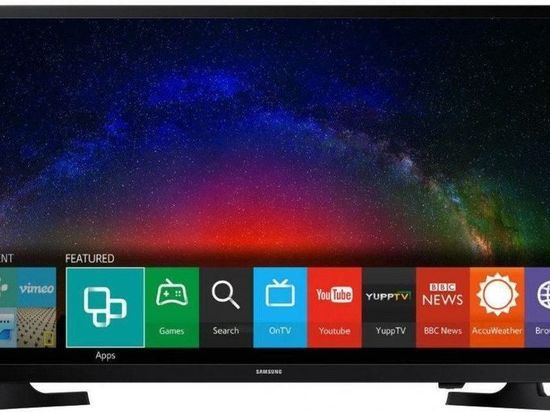
A TV in the kitchen is needed at least to while away the time while cooking or washing dishes. You can watch useful programs and cook with your favorite TV presenters without interrupting your culinary experiments. With the impressive variety of models on the market, choosing the right device can be tricky. Which TVs are suitable for installation in the kitchen and what to look for before buying?
What to consider when choosing a TV for the kitchen?
Diagonal, resolution, type of matrix, connectors, additional features are the main characteristics that you should pay attention to when choosing a TV.
Screen diagonal
The diagonal of the screen directly affects the dimensions of the device. From the point of view of convenience for kitchens, TVs with a diagonal of 22-32 inches are most often chosen. The devices are compact, do not take up much space and are easy to mount on the wall.
When choosing, it is important to be guided by the kitchen area. Otherwise, it may turn out that the large screen does not fit into the space.
Tip: a small TV can be fixed under a kitchen cabinet or built into a kitchen set, and a large TV can be placed opposite the dining table on the wall or bedside table.
There are many models on the market that can be installed in the kitchen. For example, a 22-24-inch LG TV is a good choice for small spaces. In a room with an area of 10-16 sq. m will perfectly fit the Samsung 32-inch TV. If the kitchen is spacious or combined with the living room, then you can purchase one of the Xiaomi models with a diagonal of 40-55 inches.
Resolution
The clarity and detail of the picture depends on the resolution. The minimum comfortable indicator today is Full HD (1920 × 1080). But the quality of the content is constantly improving. If your budget permits, it is best to opt for Quad HD (2560×1440) or Ultra HD 4K (3840×2160). The larger the diagonal of the screen, the higher the resolution should be, otherwise the picture will crumble into pixels.
Matrix type: TN, IPS or VA?
There are several types of matrices that are used in the production of TVs: TN, IPS and VA. The first are the most budgetary and simple ones. They have poor color rendering, short response time, and viewing angles reach only 150 degrees. The latter boast rich blacks and whites, allowing you to see the smallest details in the darkest and lightest areas of the frame. Viewing angles – 160 degrees. Still others are expensive, but stand out for their natural color rendition. The image on such a screen is incredibly detailed. Viewing angles both horizontally and vertically are 178 degrees.
Connection interfaces
If you plan to connect other devices to the TV, make sure that all the necessary connectors are available. For example, to connect acoustics, you need an audio output, and for smartphones and flash drives – a USB-A port.
Additional features
Modern TVs compete with each other not only with standard characteristics, but also with additional features. Some models are equipped with Smart TV. The technology significantly expands the functionality, providing access to the Internet. The presence of a TV tuner allows you to receive digital TV broadcasting.
The more additional features a TV has, the more expensive it is. Overpaying for functions that will not be used is irrational.
Before buying a TV for the kitchen, you need to make a list of important characteristics. After choosing some interesting models, read customer reviews and find video reviews. The pricing policy of different online stores can be analyzed on the e-Katalog website.